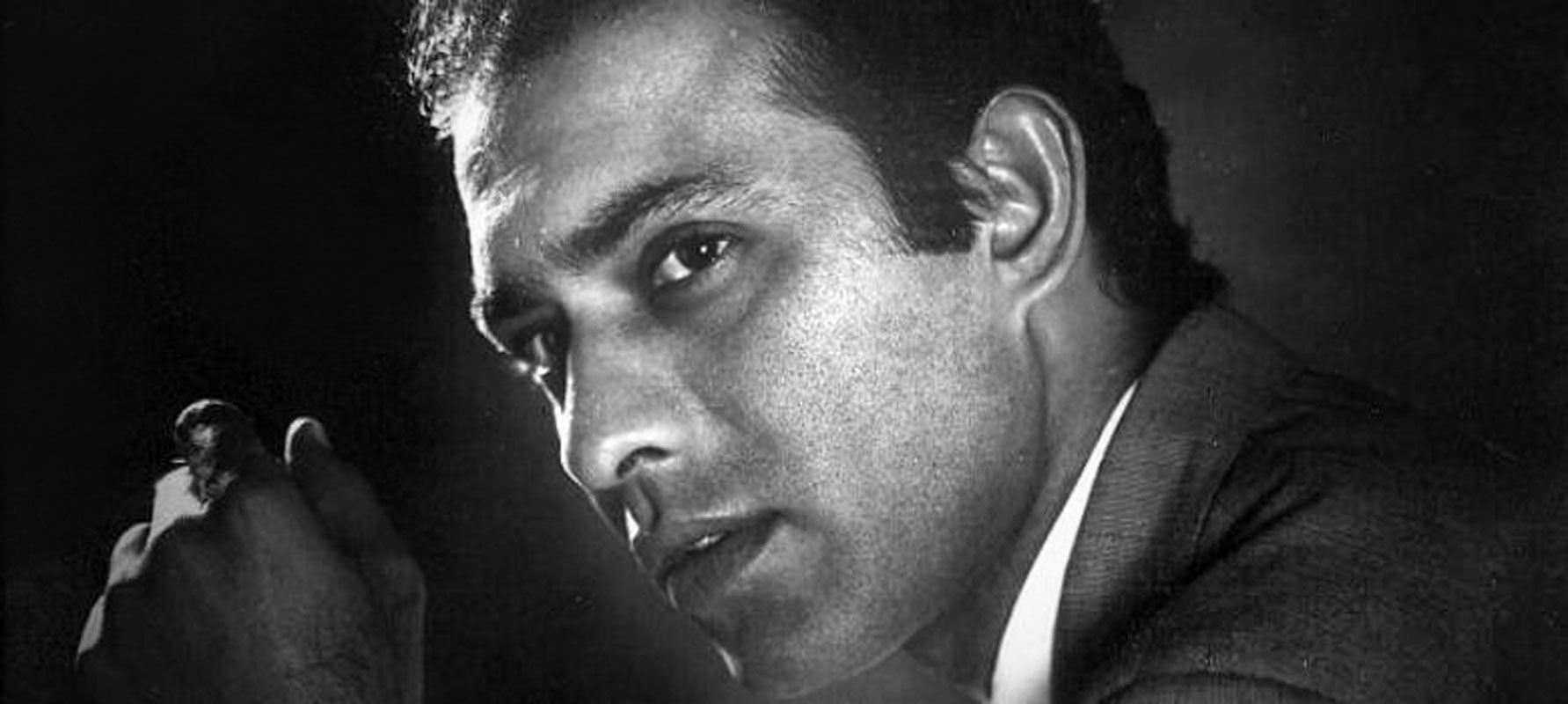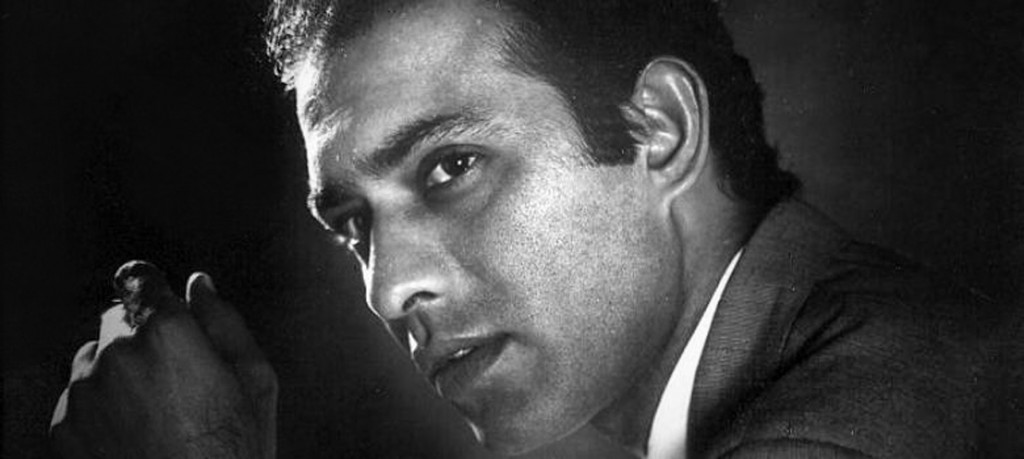
Talat Mahmood is the only singer who hasn’t been copied by others,” Lata Mangeshkar remarked once. Ace composer Anil Biswas often asserted that Rafi, Kishore and Mukesh had many clones
while Talat didn’t — because no one could imitate him.
His voice, with its unique tremor or quiver, could never be cloned. But it arguably inspired more lyrical eulogies than Madhubala’s beauty did. Talat’s songs flowed like moonlight over water, said Outlook magazine. They fell on your ear like soft petals on wet earth, said Ganesh Anantharaman, a music critic.
Talat was considered the king of ghazals (poems of love, often unrequited love and loss). Kings were his fans. He was gifted a Persian carpet by King Zahir Shah of Afghanistan, and a beautiful ornate bell by King Birendra of Nepal. He once overwhelmed King Birendra by composing to music and singing a lyric written by Birendra.
Americans described Talat as the Frank Sinatra of India. Interestingly enough, India’s Frank Sinatra passed away on May 9, 1998, and America’s Frank Sinatra died five days later.
Talat sang 747 songs in 12 languages, including 450 Hindi film songs, in a two-decade career. A relatively low output in comparison with the thousands of songs credited to Lata, Rafi or Kishore.
Yet, Talat is the favourite singer of millions round the world, who get misty-eyed on hearing his name. They regard him as the epitome of class. That velvet softness of his voice; its sweetness and pathos; the elegance of his intonation; that all-conquering tremor — it’s a cocktail that spells magic. There can be only one Talat, his army of aficionados insist.
Talat was born in Lucknow on Feb 24, 1924, one of six children of Sheikh Manzoor Mahmood. Talat was keenly interested in music even at a young age, and would enjoy sitting through all-night
music soirees. His father bought him a gramophone player and some records of K L Saigal, and young Talat was forever at the gramophone, absorbing and memorising Saigal.
He later studied at Marris Music College in Lucknow. For his entrance test at the college, he flunked theory. But the college authorities were amazed at the alaap he sang for the practical test — they realised that they were seeing extraordinary talent. News of his talent reached All India Radio, and he sang the ghazals of Mirza Ghalib and other great poets on AIR Lucknow. He cut his first disc in 1941 at the age of 17.

In 1944, at the age of 20, Talat’s Tasveer teri dil mera behela na sakegi took the country by storm, and sold more than 100,000 copies. It remains one of the biggest non-film hits even today. The Calcutta film industry was quick to tap his genius and also persuaded the handsome youngster to act. Talat sang several songs and acted in three of his 13 films in Calcutta. He treasured all his life his meeting with Saigal when the legend was recording the song Ek bangala bane nyara.
In 1949, Talat moved to Mumbai. Saigal was no more, and it was the right time for a talented new ghazal singer to make his mark. The following year, Talat’s song of despair in Arzoo filmed on Dilip Kumar and composed by Anil Biswas became a rage. Ae dil mujhe aisi jagha le chal jahan koi na ho was a chartbuster.
This was the first of numerous exquisite songs that Talat voiced for Dilip in subsequent years. These included Duniya badal gayi and Mera jeevan sathi bichad gaya (Babul, 1950), Nain mile nain hue bawre and Seene mein sulagte hain arman (duets with Lata in Tarana, 1951), Ae mere dil kahin aur chal (Daag, 1952), Yeh hawa yeh raat yeh chandni (Sangdil, 1952), Shamegham ki kasam (Footpath, 1953). Each of these songs was a jewel. Talat’s voice helped immortalise Dilip’s image as the tragic lover.
Dilip wanted Talat always as his playback, but Talat had antagonised Naushad (Dilip’s all-weather composer) by smoking on the sets of Babul before recording a song. Naushad banished Talat from his music, and thereby from Dilip’s films.
But Talat’s wonder voice and its impact captivated the industry. He recorded the immortal Jayen to jayen kahan composed by S D Burman for Dev Anand in Taxi Driver (1954); and memorable hits like Meri yaad mein tum na ansu bahana for Manher Kumar in Madhosh (1951); Main dil hoon ek armaan bhara for Raj Kapoor in Ashiana (1952); Chal diya kaarvan (Laila Majnu, 1953) and Aye gham-e-dil kya karoon (Thokar, 1954) for Shammi Kapoor; and Sub kuch luta ke hosh me aye to kya hua for Ashok Kumar (Ek Saal, 1957).
Talat was riding high, and the acting bug bit him. Producers believed that with his dashing good looks and his singing talent, he could be a crowd-puller as a singing star, and Talat got tempted. For his film Dil-e-Nadaan (1953), producer-director A R Kardar launched a national beauty contest to find a heroine for Talat. Peace Kanwal was selected.
Between 1951 and 1958, Talat acted in 10 films opposite Madhubala, Shyamala and Peace Kanwal, Nadira, Suraiya, Mala Sinha, Shyama and Nutan. They were unspectacular and public response was tepid, but Talat sang some exquisite songs in these films — such as Zindagi denewale sun (Dil-e-Nadan), Jhoome re (Ek Gaon Ki Kahani) and Pyar par bas to nahin hain mera lekin phir bhi (Sone ki Chidiya).
Talat’s foray into acting turned out to be ill-advised. It didn’t excite the public, and it meant far less time for music. He was soon to realise that he was no match for Dilip’s charisma, Dev Anand’s charm and flamboyance or Raj Kapoor’s studied artlessness. Shammi Kapoor asked Talat why he was wasting his time acting, when he could sing so well.
Talat decided to pay heed and focus on singing once more — but his time had passed. Mohammad Rafi dominated the playback scene and was every producer’s first choice. Popular taste had changed too. Melody had given way to rhythm. Ghazals were replaced by jazz and pop and the electronic rhythms of the disco generation. Gentle romance had given way to colour, spectacle and noisy escapism. Talat himself said that Shammi Kapoor — who had rendered the heartrending ghazal Ae gham-e-dil kya-karun on screen in Talat’s voice in Thokar (1954) — now yelled Yahoo through Rafi!
Talat had to be content with a song here and there, and occasional triumphs didn’t create a wave. Humse aaya na gaya in Dekh Kabira Roya (1957) was a classic. Jalte hain jiske liye (Sujata,1960) was not merely a hypnotic song, it immortalised the image of Sunil Dutt singing on the phone to Nutan. Thousands of young men in India have since sung to their sweethearts on the phone. But composers didn’t inundate Talat with calls.
Dilip wanted Talat to sing Suhana safar in Madhumati (1957) but Talat himself urged Dilip to call Mukesh, who was then hard up. “The famed gentleness of Talat was not confined to his voice alone,” says Anantharaman. The song was a hit and helped revive Mukesh’s career; he was profuse in his gratitude to Talat.
Madan Mohan got Talat to sing the major songs of Jahan Ara (1964), against the wishes of the producer who wanted Rafi. Phir wohi shaam wohi gham in this film was a gem and a chartbuster. Teri aankh ke aansoo pee jaoo was another memorable number. But the film flopped, and didn’t help the careers of either Talat or Madan.
The failure of Jahan Ara upset Talat and he decided in the mid-1960s to stop singing in films, but continued to perform in stage shows, particularly abroad, where he always got a tumultuous reception. In 1956, Talat had done a 45-concert tour of East Africa (though only six concerts had been planned). It was the first foreign concert tour by an Indian playback singer.
He toured Pakistan a few times; he was a cult figure there, and was both lionised and romanticised. In 1961, a record crowd of 58,000 fans packed the Karachi stadium. EMI, Karachi, honoured Talat with a silver disc. Noor Jahan called from Lahore to request Talat to join her at a concert, and offered to send him a blank cheque. Talat declined because of commitments in Bombay.
One of his most memorable concert tours was in Trinidad in 1968, where he received a hero’s welcome from thousands of fans waving Talat fan club badges. A music group sang a special Calypso song.
Talat toured the US and Canada seven times between 1969 and 1991 and sang at prestigious venues such as the Madison Square Garden. In 1979, he performed at the renowned Royal Albert Hall, London, with tickets being sold out two weeks in advance. Over the years, he toured several countries of Asia, Europe and the Middle East.
He was awarded the Padma Bhushan in 1992, and also received a slew of awards including the Maharashtra government award and the Lata Mangeshkar puraskar. But perhaps what Talat valued more was the inspiration he provided to top ghazal singers such as Jagjit Singh and Mehdi Hasan.
His relationship with other stars and singers
“He was a perfect gentleman,” Dilip used to say of Talat, who commanded the respect and affection of everyone in Bollywood with his unfailing charm, courtesy and refinement.
Kishore Kumar was one of Talat’s admirers. When Kishore was told at one of his stage shows that Talat was in the audience (his daughter Sabrina was very keen on the show), Kishore announced that the great singer Talat Mahmood was present, and invited him to the stage.
Madan Mohan once hosted a dinner in honour of visiting ghazal queen Begum Akhtar. At the mehfil preceding the dinner, Talat was the first singer. Kishore, seated between Rafi and Manna Dey, said “Let’s quietly exit, we won’t be able to break the spell cast by Talat.”
Personal preferences
Talat’s favourite foreign singers were Nat King Cole, Pat Boone, Bing Crosby, Elvis Presley and Connie Francis. He had a rich collection of the movies of Chaplin and Laurel-Hardy. A car buff, he enjoyed going on long drives with his family. He loved sweets and no meal was complete without a sweet dish, his favourites being rasagolla, kheer and carrot halwa.
Talat was a heavy smoker for much of his life, and this perhaps told on his health. In his later years, Parkinson’s disease affected his speech. Friends found it heartbreaking that this had happened to one of the world’s best-loved voices. He passed away in 1998 at the age of 74. His global army of fans recall with tears the masterpiece Meri yaad mein tum na ansu bahana.
The author is a senior journalist and a member of the Rotary Club of Madras South











